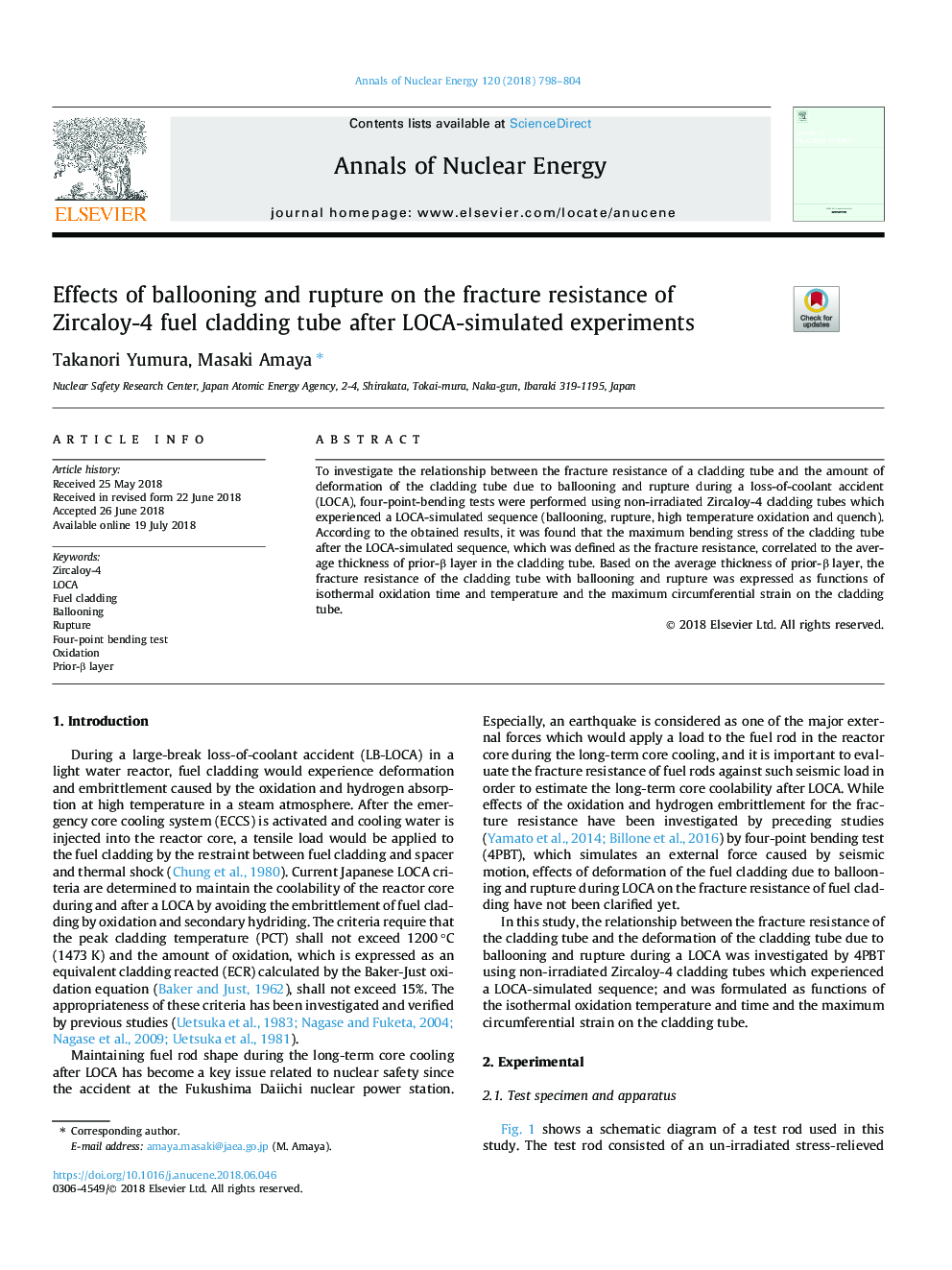| Article ID | Journal | Published Year | Pages | File Type |
|---|---|---|---|---|
| 8066889 | Annals of Nuclear Energy | 2018 | 7 Pages |
Abstract
To investigate the relationship between the fracture resistance of a cladding tube and the amount of deformation of the cladding tube due to ballooning and rupture during a loss-of-coolant accident (LOCA), four-point-bending tests were performed using non-irradiated Zircaloy-4 cladding tubes which experienced a LOCA-simulated sequence (ballooning, rupture, high temperature oxidation and quench). According to the obtained results, it was found that the maximum bending stress of the cladding tube after the LOCA-simulated sequence, which was defined as the fracture resistance, correlated to the average thickness of prior-β layer in the cladding tube. Based on the average thickness of prior-β layer, the fracture resistance of the cladding tube with ballooning and rupture was expressed as functions of isothermal oxidation time and temperature and the maximum circumferential strain on the cladding tube.
Related Topics
Physical Sciences and Engineering
Energy
Energy Engineering and Power Technology
Authors
Takanori Yumura, Masaki Amaya,
